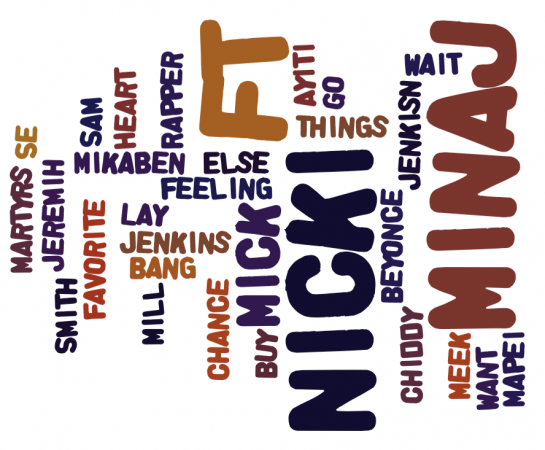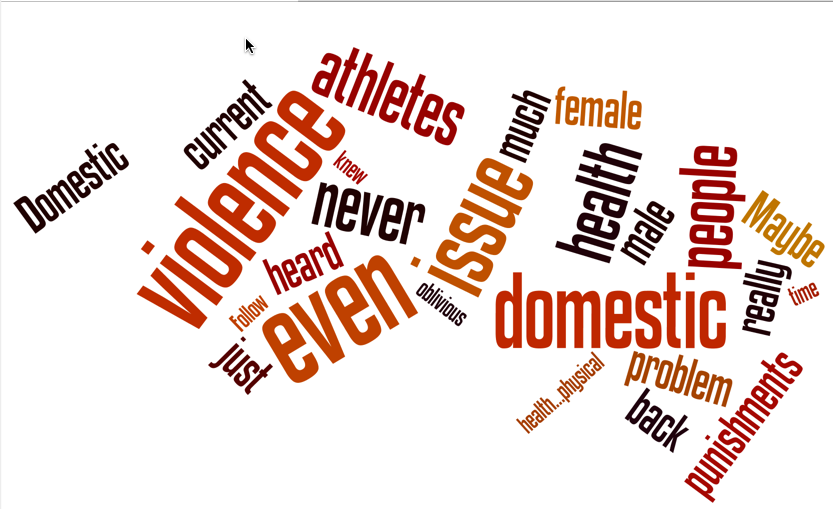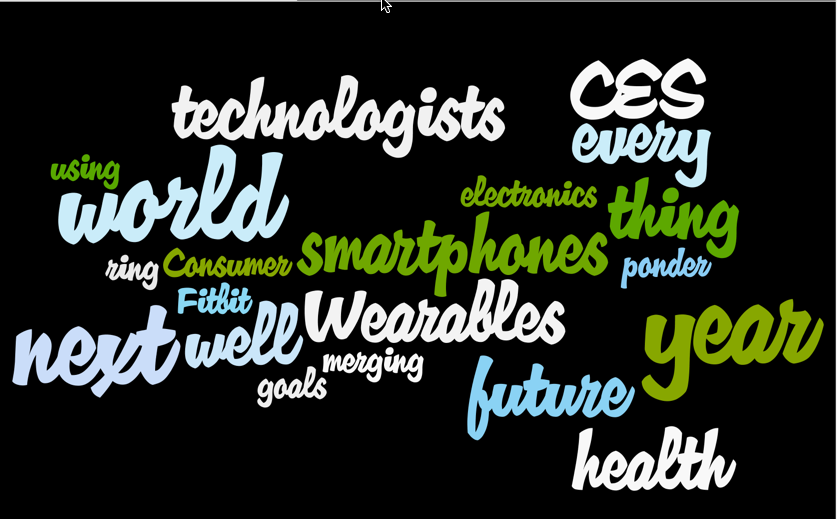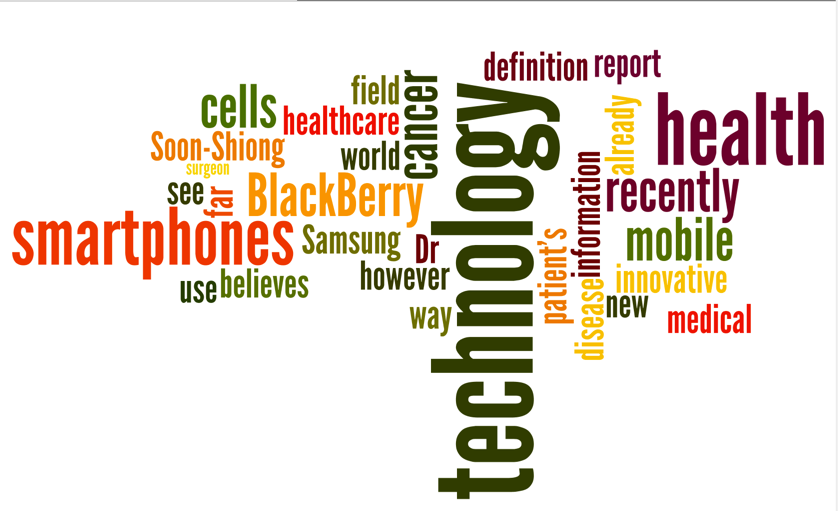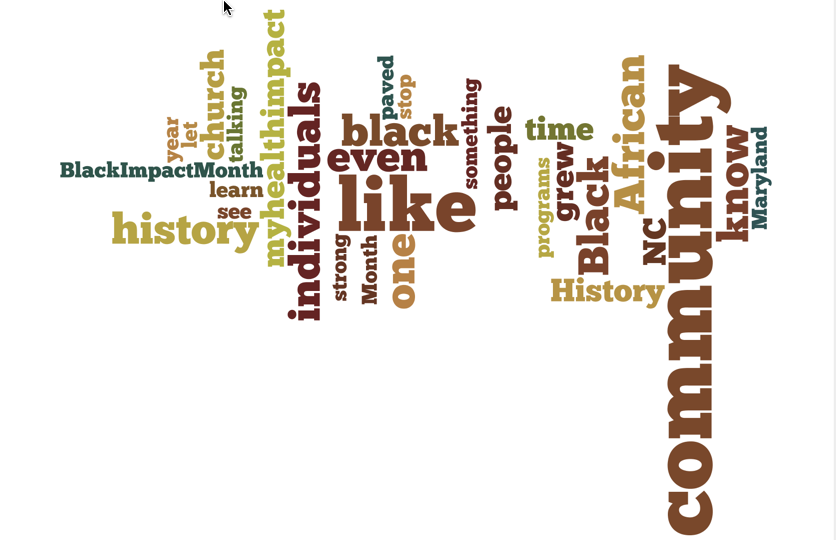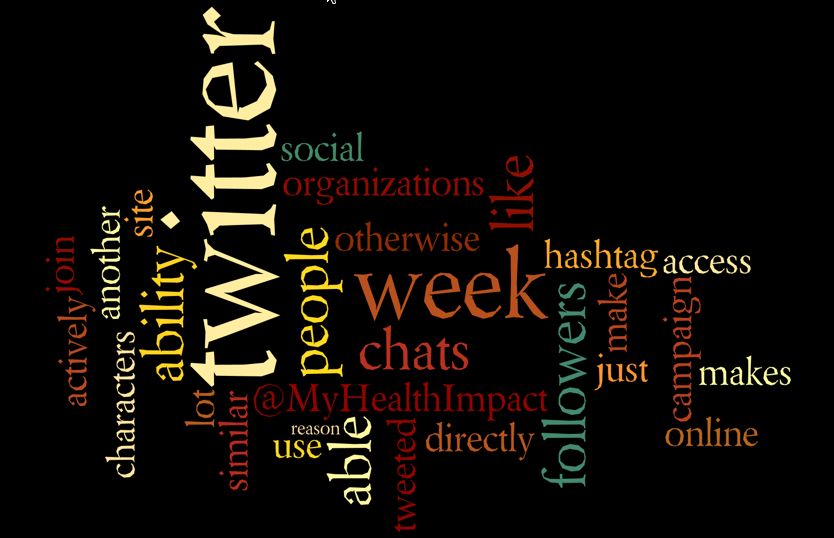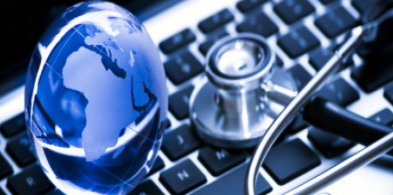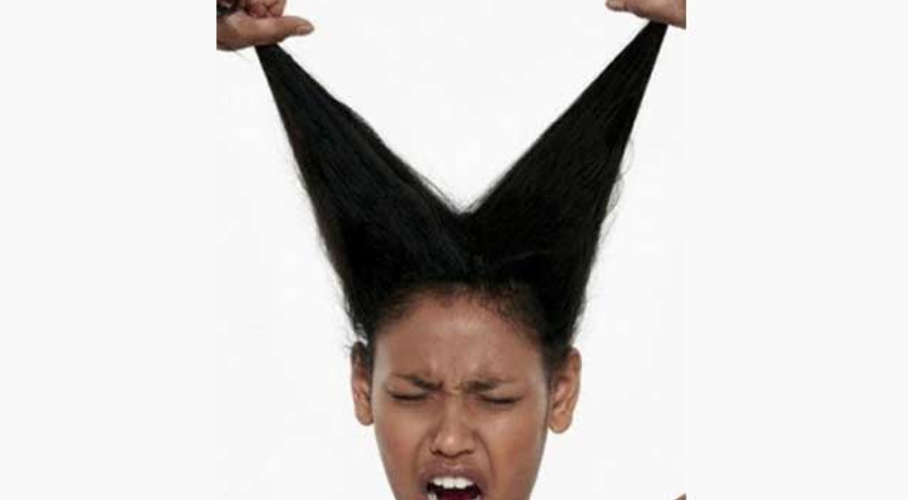myHIN Blog
Category: Tips Articles

May 05, 2016
Voting in a Digital World
***NOTE: I am a Google employee***
Who is responsible for informing the world on politics? This is a question that recently came up since it’s election season and both U.S. politicians and technology companies are experimenting with getting the word out to people -- like you! Check out some of the many ways social media is being leveraged to get you out the house and to the polls.
Facebook shows you a political card in your newsfeed and prompts you to take the following action(s):
- “Share You’re Registered” turns you into a voting advocate by encouraging you to post a politically driven message to your family and friends
- “Register Now” directs you to a U.S. government website so that you can register to vote
- “Find your polling location” shows you where your polling location is after typing in your address. How simple is that?


- Reminds you to vote by telling you exactly when your state’s primary/caucus is via Google Now Cards.
- Makes you aware of new search features to find out more about specific candidates “Ted Cruz” and their stances on various political issues like “Hillary Clinton economic policies”
- Allows you to follow the results in state primaries/caucuses by searching for “primary results”


Snapchat
- Turns you into a digital voting advocate among your Snapchat followers by allowing you select a paid Snapchat filter -- instead of your go to photo filter
- Encourages you to follow the political scene in your local primary/caucus by watching a curated Snapchat story


Pretty cool stuff right? In a day and age where newspaper subscriptions are on the decline and social media is soaring among millennials, technology companies are starting to fill the information void. As a computer science teacher, I love this because it showcases how society directly impacts how we -- the people -- make decisions to vote, entertain and even plan family vacations. One thing to consider though is how this affects people who don’t have access to these resources. Are technology companies still responsible? What about newspaper publications and other media entities?
Let us know your thoughts and remember to vote in local, state and national elections!
#tech #voting #knowtheissues #election2016
References
On the road to the 2016 elections with Google Search (2016)
Facebook Asks People To Vote And Tell Friends, Shows Nearest Polling Place (2014)
Bernie Sanders launches 'Feel the Bern' Snapchat filters in lead up to Iowa caucuses (2016)
Share

June 09, 2015
Growth
The key to maintaining a long relationship is keeping it healthy. Think of it as the same way you would treat a plant. You have to water it, nurture it, and give it some room to grow. Growth being the most important. Your significant other should complement your growth and you should do the same for them. This means encouraging one another to pursue those dreams and maintain high goals.
From my personal experience, it can be somewhat challenging if those dreams take your significant other to another side of the country. At the end of the day you have to put yourself in their shoes and realize that you would like the same support in that situation.
Relationships can be hard; that’s no secret. However, recognizing how the growth of the relationship affects the individuals is amazing. Growing as one and yet still two individuals is the best part of it all.
Psychology Today gives a couple healthy nuggets to maintaining a healthy relationship. I’ll leave you all with a couple that resonated with me:
- Give what you want to get.
- Successful relationships take work.
- Find a way to become and stay best friends.
Share
April 09, 2015
Sexual Health Education
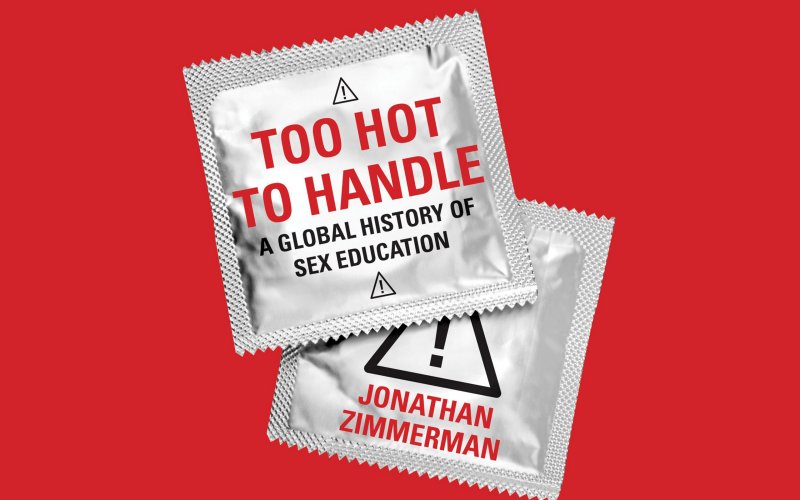
Denae
It was in elementary school that we had our first sexual education course. It was either 5th or 6th grade that we marched into my Science Teacher’s room to hear the real truth about the birds and the bees. Of course, our parents had to sign a permission slip in order for us to get the life lesson. The funny thing is I barely remember anything about that class. All I remember is that we sat down we talked about different types of condoms, pregnancy, and maybe chromosomes. My parents never had ‘The Talk’ with my siblings, and I so this class was the closest thing to it.
It wasn’t until I had a Sex Education class my ninth grade year in High School that I had to witness the miracle of child birth. In this class, we watched videos and talked about the entire sexual reproductive system. After that, there were no other topics on that until I got to college.
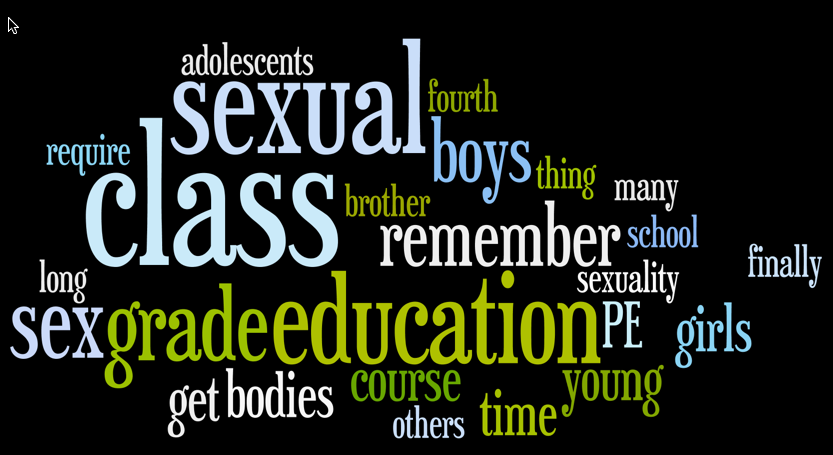
Marcel
From a very young age, I was made aware that there were differences between “boys” and “girls”. I faintly remember a time in second or third grade where they took each student in the class and pointed to two dolls, mentioning there were differences and that it was inappropriate to touch certain areas of each doll. But this was not a true introduction to human sexuality. I took had a 5th grade class where we learning about family living, ethical behavior, and human sexuality. It was here that I learned of abstinence and its importance in remaining healthy. When I entered high school, I finally learned about contraception, STDs and STIs, but for many this is much too late.
I have the great fortune of having a psychotherapist as a mother. She has worked with adolescents for a long majority of her career, and has always been very open with my brother and me about what is and is not appropriate. My sexual education may have begun earlier than many, but my mother’s experience with adolescents who had experienced sexual violence or had committed acts of sexual violence against others forced her hand. My brother and I were taught early on about our bodies, respecting ourselves, and showing the utmost respect for others.
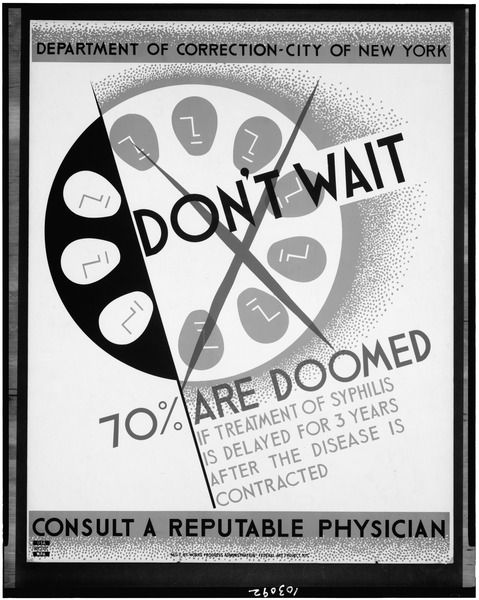
KaMar
I remember going to my PE class in the fourth grade excited to finally let off some steam and play with my friends. It was Friday which meant free day aka everyone grab a basketball and find the nearest hoop. However, today would be different as my PE teacher split up the group into boys and girls. The girls were taken to another classroom while the boys were instructed to sit on the gymnasium floor. Up above was a rolling TV cart and my PE Teacher explaining to the boys group that he forgot to mention during the last class that he had to teach us about how our bodies change as we get older. Naturally, we weren’t trying to hear it, but we sat and listened hoping we would get just 5 minutes at the end of class to throw up a few baskets.
We ended up watching a long and boring film that never spoke about how our bodies changed over time but rather depicted various sex organs, including their scientific name, while narrated in a robotic tone. Thinking back to the actual footage, I cannot understand how something so incredibly stale could be shown to fourth graders! At a time where young students gravitate towards shows on Disney, Nickelodeon, PBS, and other children focused networks, it’s mind boggling to note this film as my introduction into the sexual reproduction cycle. I am not alone on this issue as sex education is anything but standardized. At present, only 22 states require sex education in schools, and only 19 require that sex education is medically, technically or factually accurate. With those numbers, I wonder if sex education is meant to teach young minds about sexual health or just a course with a checkbox?
Share

March 26, 2015
Women of Color: STEM Faculty Discussion
Currently my department is actively recruiting faculty members. We have candidates come and present their work as we listen and take notes on their interesting talks and pass them on to the department. However, I noticed something interesting. None of the faculty candidates talks that I have sat in on have been women of an underrepresented group. I thought it was pretty interesting when I was trying to find a paper for my group to discuss at our weekly meeting that I stumbled upon a guest editorial by Marcy Towns titled Where are the Women of Color? Data on African American, Hispanic, and Native American Faculty in STEM.
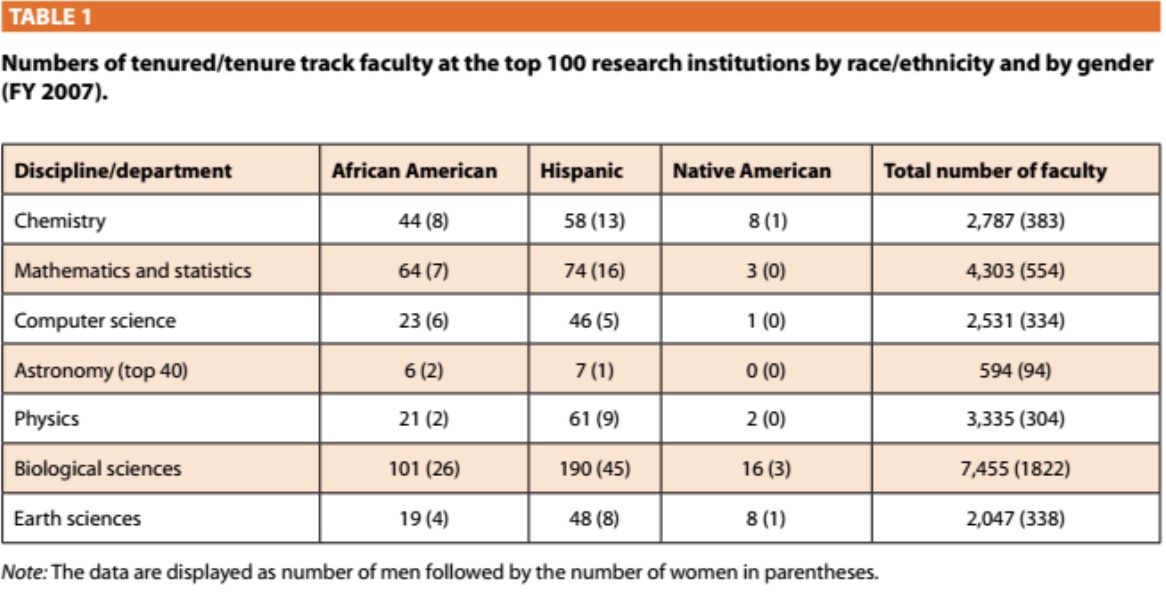
I felt as though this paper fell into my lap and but I was very hesitant to bring it to our reading group in fear that I would be pinned as “angry”. After great deliberation with one of my labmates I decided to bring it up while we were talking about another faculty candidate. Of course me being as awkward as I am the conversation started out slow but then generated a great flow. In the conversation we talked about different cultures, what it means to be a majority, the benefit of having role models, and having professors and faculty you can identify with(beyond race) as a student. In this discussion I think we all learned a little about the environments we have come from and the transition to NC State’s level of diversity. The conversation even took a turn to talk about the effects of diversity in general and what that is to us. Personally, NC State was a step backwards for me as far as diversity is concerned, for others it was giant leap forward.
I can’t begin to explain how excited I am to have talked about this with my lab group. We definitely learned a lot about each other and this allows us to grow closer as researchers and to understand each other better.

During our talk I sent the paper to the group email list for people to read afterwards. I’m guessing my advisor, who was not there at the discussion, read the paper. He later sent me a blog post by Stephanie Migdalia Pi Herrera titled Institutional Barriers for Women of Color at Code Schools. The most interesting point of this blog post that resonated with me is trying to bring up the topic as an issue without sounding aggressive. I just thought it was amazing how my advisor wasn’t at the discussion but was able to send me support about the topic.
I encourage all our readers and followers to read both articles. You can claim it as a way of celebrating Women’s History Month! I guarantee you will find something valuable from there even if you are not a woman. Consider bringing up these articles as a great way to start a conversation with your own community. Also, see more on the topic noted as Acknowledging Diverse Experiences in STEM by @drfayonline.
Share

March 16, 2015
Baby Brother
When asked how I am doing, I often respond by saying, “my family is healthy, and my brother is happy, so I have no complaints.” With the stresses of coursework it can be easy to get wound up from time to time, but I do my best to avoid that. Last semester I successfully attempted to meditate each night for 30 consecutive days, and an integral part of my meditation was to think of five things I am happy about or grateful for. Each night my family was involved in one of the five. With four strong personalities between my mother, father, brother, and I, there is seldom a dull moment, and rarely silence. My mother is a clinical psychologist, and my father a professor of philosophy, which in turn has led to the cultivation of expressing emotion and opinion in my brother and I, beginning at a very young age. This skill has served me well, and a characteristic I owe endless thanks to my parents for.
As we have begun our Black History Month the messages of unity, pride, and appreciation, ring closest to me at this time. With the current attention paid to black lives, on a national scale, the love for my younger brother has also come to the forefront of my attention. I do not think my brother and I have ever been closer. My brother is currently a senior in high school, going through a tiresome college application process. Hopefully, his opportunities will be plentiful, which should create a difficult decision come Spring when he receives his admission decisions. This process is exciting for me as well, as I wait anxiously to hear the decisions, it might even be more exciting for me than it is for him.

While I was in high school my mother repeatedly said that she wanted to raise two empathetic young men, and I believe my moving away spurted this characteristic. The distance between my family and I, specifically with my brother has prompted an interesting change. We were together for most of our schooling, and spent most of our free time together, but as he gets older and I do the same our conversations have changed. Because of our constant presence in each other’s lives we did not feel the need to talk about our weeks, or events taking place. We were aware due to our presence. We now rely on each other’s perspective when talking. I hear what goes on in his life through his interpretation, and vice versa. This is not however a negative change, it is indeed an interesting change, and has definitely influenced my empathy.
I trust his interpretations and appreciate his honesty, making it all the easier to feel and understand his emotions, as he juggles his maturation, his interpersonal relationships, and his environment, all the while finishing his last semester of high school.
Share
March 01, 2015
MyHealthImpact Topics 2015
Click on the word clouds below to see a recap of the wonderful blogs by our Research Team so far in 2015.
Stay tuned to @myhealthimpact for more news on the interconnection between health and tech!
Share

February 06, 2015
BlackBerry in Healthcare
Dr. Patrick Soon-Shiong, the wealthiest physician in the world, is relentlessly working to becoming one of the most innovative as well. Dr. Soon-Shiong works at University of California Los Angeles as a medical surgeon, but his most recent work involves revolutionizing the way cancer is approached, starting at the very definition. 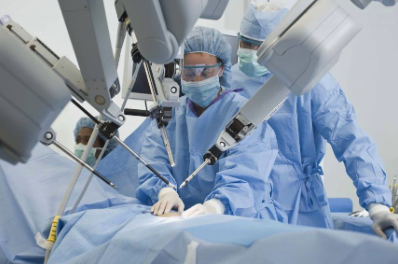 Cancer.gov sites a cancer as being a “disease in which abnormal cells divide without control” but Dr. Soon-Shiong believes there can be a different approach to the term. In an interview with 60 Minutes he proclaims, “A cancer is not what people think it is, cells growing. Cancer is actually the inability of the cells to die.” His new concept of the definition is the first of many steps he has taken to rethink cancers. Although this is innovative in its own right, Dr. Soon-Shiong believes he is on his way to something much more groundbreaking. He has recently developed a technology that can analyze a patient’s tumor biopsy and then proceed to report the specific gene mutated by the disease. All of this can be processed and accessed in the palm of the patient’s hand, through BlackBerry.
Cancer.gov sites a cancer as being a “disease in which abnormal cells divide without control” but Dr. Soon-Shiong believes there can be a different approach to the term. In an interview with 60 Minutes he proclaims, “A cancer is not what people think it is, cells growing. Cancer is actually the inability of the cells to die.” His new concept of the definition is the first of many steps he has taken to rethink cancers. Although this is innovative in its own right, Dr. Soon-Shiong believes he is on his way to something much more groundbreaking. He has recently developed a technology that can analyze a patient’s tumor biopsy and then proceed to report the specific gene mutated by the disease. All of this can be processed and accessed in the palm of the patient’s hand, through BlackBerry.
To most, Blackberry is now irrelevant in the world of mobile phones, dominated by Apple and Samsung. BlackBerry however will soon be very relevant in the field of healthcare if Dr. Soon-Shiong’s product finds any success. There was recently a report claiming a rumored purchase offer from Samsung, resulting in a significant increase in BlackBerry shares. This possible partnership could make waves in the ever-growing mobile-health market. It truly prompts the question what role can technology, specifically smartphones, play in the dissemination of health awareness and information.
 We do not need to look far to see what mobile technology is already doing for health. FHI 360, a company located in our Research Triangle Park, has been using mobile technology in health, or “mHealth,” for a quite some time. They use smartphones to “share information on family planning, reproductive health, HIV and sexually transmitted infections.” The use of technology however is quickly progressing. The Wall Street Journal recently published an article mentioning several new methods in which smartphones and other forms of technology are being used to monitor health, and even collect and interpret medical data. Blood-pressure readings and electrocardiograms are already common procedures smartphones are capable of performing with a few accessory instruments, but we are not far from the day where all it takes is a watch to record our vital signs.
We do not need to look far to see what mobile technology is already doing for health. FHI 360, a company located in our Research Triangle Park, has been using mobile technology in health, or “mHealth,” for a quite some time. They use smartphones to “share information on family planning, reproductive health, HIV and sexually transmitted infections.” The use of technology however is quickly progressing. The Wall Street Journal recently published an article mentioning several new methods in which smartphones and other forms of technology are being used to monitor health, and even collect and interpret medical data. Blood-pressure readings and electrocardiograms are already common procedures smartphones are capable of performing with a few accessory instruments, but we are not far from the day where all it takes is a watch to record our vital signs.
Follow us @myhealthimpact as we continue to discuss technology in health.
Share

January 09, 2015
It’s 2015: Tech-Social Activism was Big in 2014…It will continue
2014 included many social, political, global, business, technology and economic events that influence society. All of which has implications, consequences, and rooted issues related to health. Society took to @Twitter and other social media channels in a show of social activism. Here are a handful (and we note only a handful) of the 2014 leading hashtags.
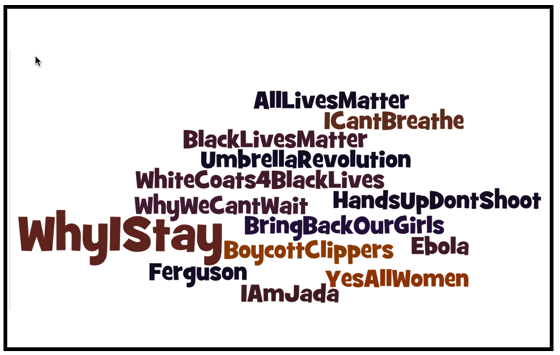
One may ask what are the health implications. There are many: women’s health, men’s health, sexual health, mental health, health disparities, global health, workforce diversity, health policy, stigma, health economics, health law, social policy, and race/ethnicity.
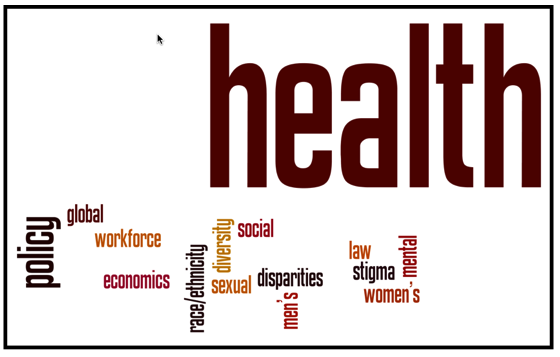
As we continue to work to shape the health + tech discourse, we would like to hear your voices of these issues. Follow us at @myhealthimpact. Visit us on the web. Follow us on Tumblr. Read and comment on this and other blogs on our site. Tag us at #myhealthimpact.
Share

December 11, 2014
Kitchen Beautician
I spent this weekend being a beauty stylist. I colored and straightened my sister’s hair, colored my friend’s dreadlocks, wash and straightened my hair, and tried another hair project that was completely new for me. My sister and I tried our hand at wig making! We watched a couple YouTube videos and decided, “Hey, Let’s do it!”
To give you an idea of my hair, I am a naturalista with shoulder length hair. I have the opportunity to try a lot of styles with my hair and that’s what I love about it. One day my hair can be bone straight and the next day I can have a bushy twist out. I LOVE THIS FLEXIBILITY! However, playing with all the flexibility of my hair does have a down side. The constant manipulation of my hair can lead to hair damage. This is why wigs and wearing tracks(hair extensions) is so amazing. In addition, I really want to see my hair in a short pixie style but I’m honestly not ready to cut my real hair yet.
Wigs often get the connotation of being only for those who are suffering from hair loss related diseases or the inability to grow hair, but wigs offer so much more than that. They are a fun way of expressing yourself and I challenge you all not to knock it until you have tried it. With extensions, you can keep your real hair in a low maintenance style such as cornrows and on top sew in some weave or wear a ‘hair hat’ to try a different look. One of the most beautiful things about being a black woman is the choice to have versatility with your hair. So why not explore that versatility? If things don’t come out the way you want it’s not the end of the world. It’s just hair, and certainly, I do not let hair dictate my workouts.
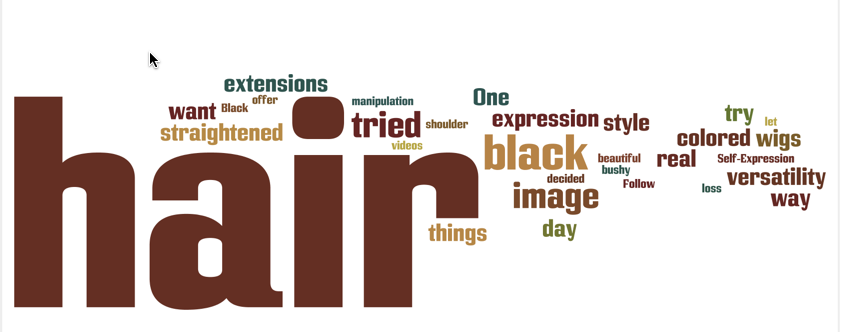
#Images #Self-Expression #Health #Hair
Follow @myhealthimpact for more on self-expression.
Share

November 25, 2014
Stressless Playlist
It’s almost finals season and the last thing you want is stress. It’s getting cold out and daylight savings makes the sunshine more precious with every passing day. Whenever I need some me time just to think, these are some songs I’ve been listening too recently.
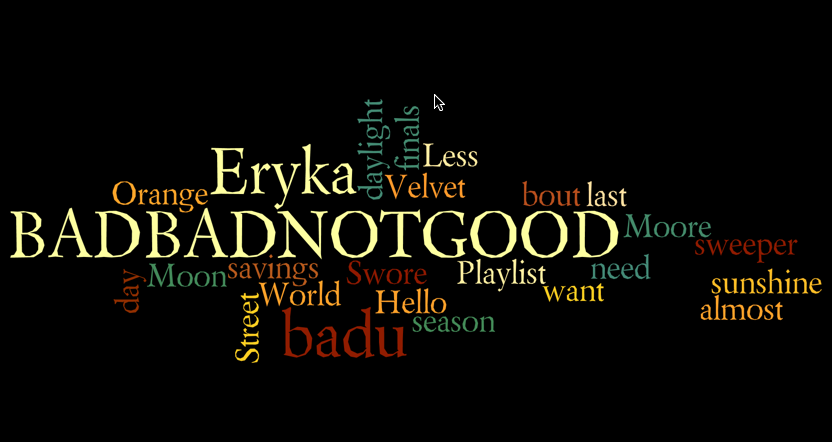
Continue to follow @myhealthimpact on Twitter for more relaxing music when you need it the most!
Share
Page 1 of 6 pages 1 2 3 > Last ›
In Partnership with: Poole College of Management, College of Humanities and Social Sciences, National Science Foundation, Penn State
Take Action, Get Tested: Find Your Local Testing Center Why Get Tested?



